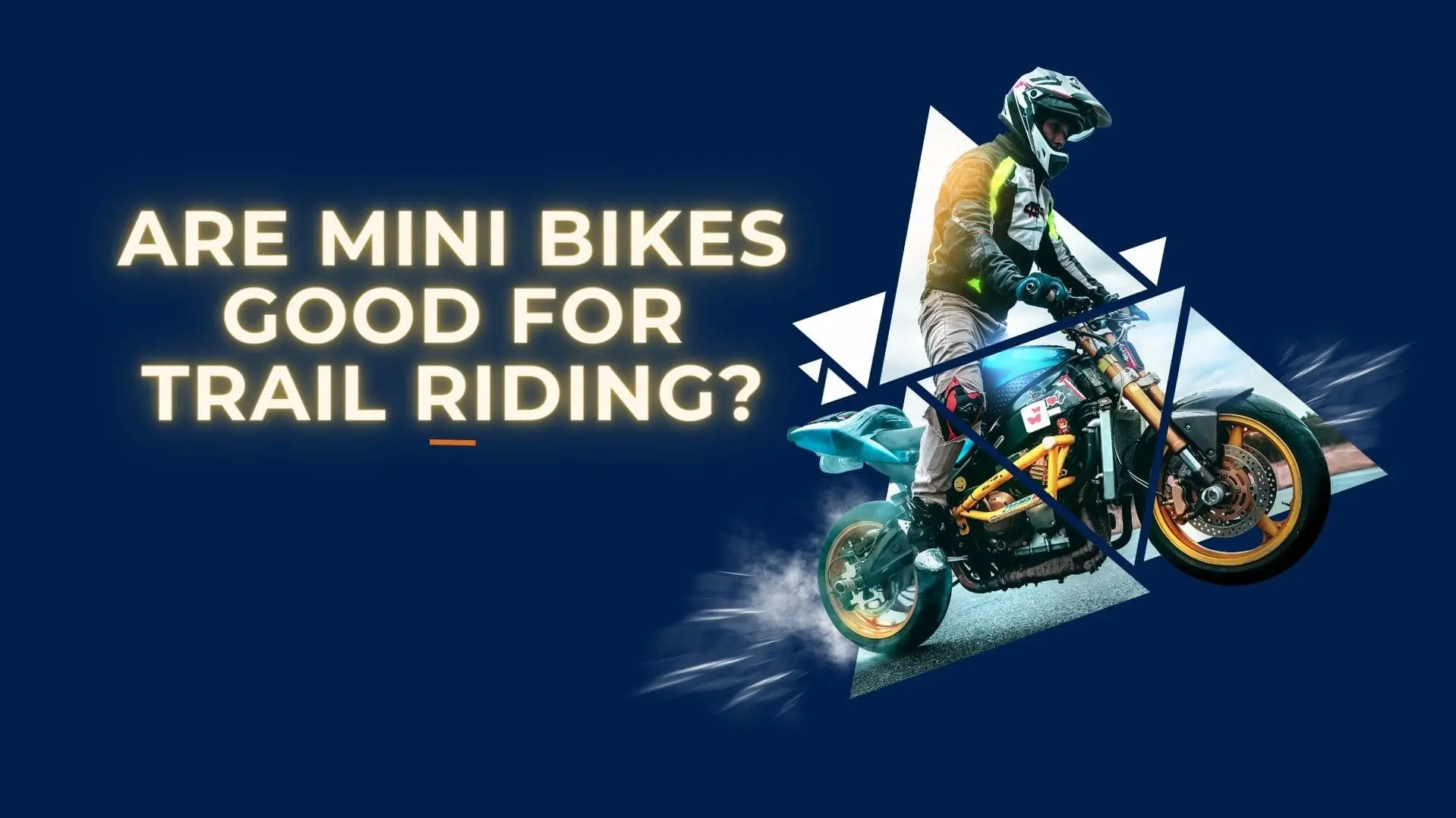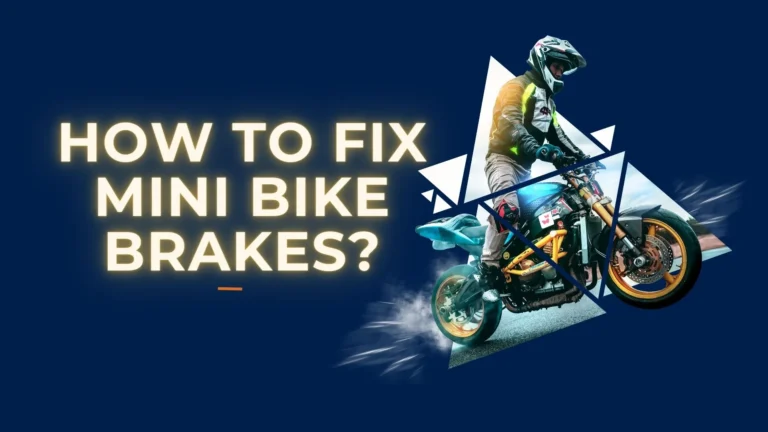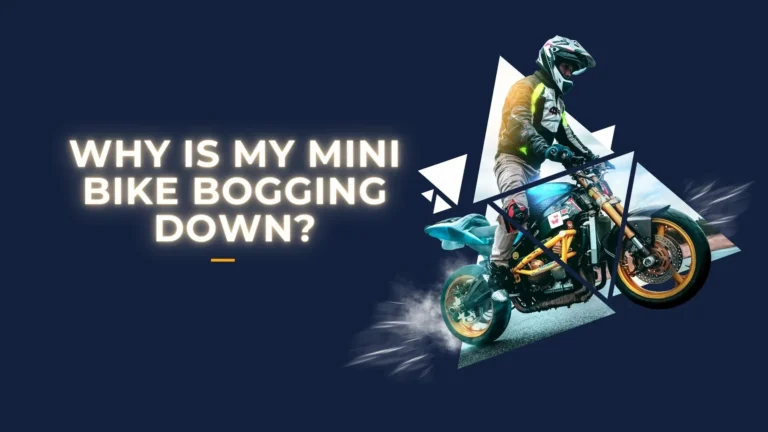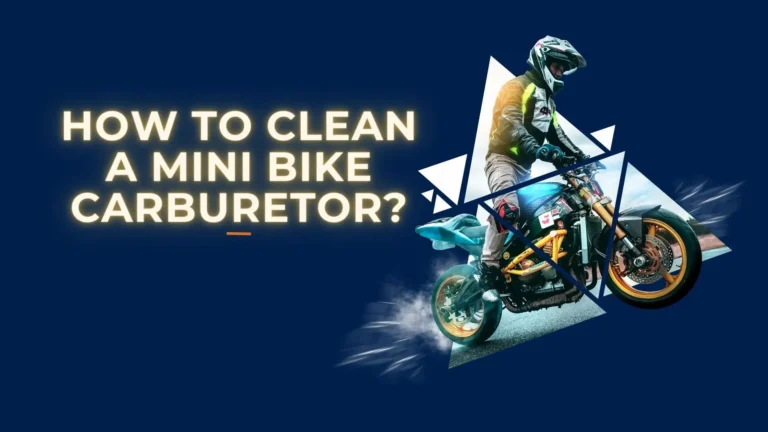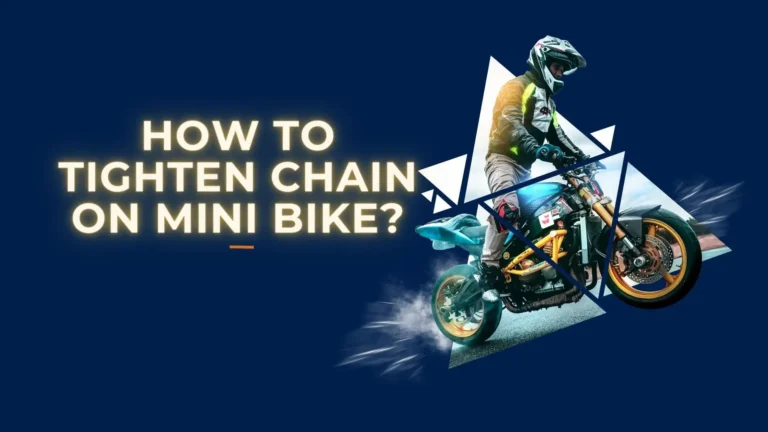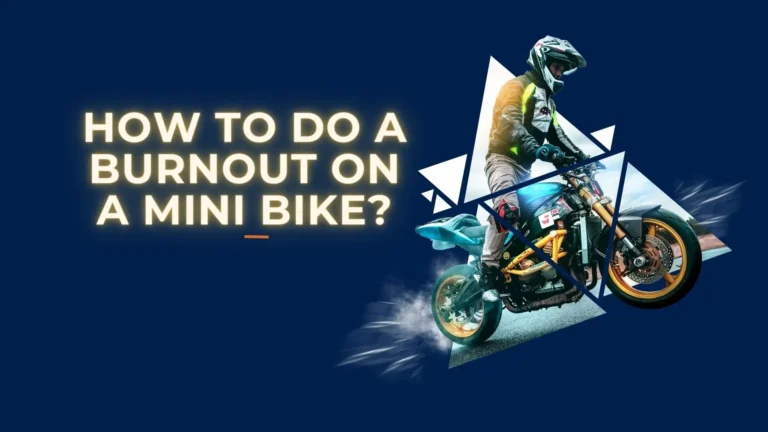Are Mini Bikes Good for Trail Riding?
Yes, mini bikes can be great for trail riding with the right model and preparation. Choosing a bike suited for rugged terrain and outfitting it properly makes mini bikes a thrilling way to explore off-road trails.
Mini bikes are small, nimble motorbikes that provide big thrills on off-road trails. Their compact size allows for excellent maneuverability on winding dirt paths and over rugged terrain.
This guide will cover key factors in determining if a mini bike is a good choice for trail riding:
- The pros and cons of different mini bike types and engines
- Essential features like suspension travel and ground clearance
- Useful modifications for improving trail handling
- Required riding gear and safety precautions
- Cost considerations of owning a mini bike
- Finding legal places to ride off-road trails
Whether you’re an experienced mini bike rider or new to off-road adventures, this guide provides helpful knowledge for evaluating if a mini bike suits your needs and riding style.
Key Takeaways
- Mini bikes are small, agile motorbikes great for off-road use. Their compact size allows excellent maneuverability on trails.
- Key factors in choosing a mini bike are the engine type (gas vs electric) and transmission (auto vs manual).
- Essential features for trails are good suspension travel, ground clearance, tires, and brakes.
- Recommended modifications include upgraded tires, suspension, skid plates, and brakes. These improve handling and safety.
- Always use proper safety gear like a helmet, gloves, boots. Ride within your abilities. Bring repair supplies.
- Owning a mini bike has costs like purchase price, insurance, mods, maintenance. Factor these in.
- Great legal places to ride are OHV parks, some public lands, private trails with permission. Avoid illegal areas.
- Match the mini bike to your riding style and skill level. Prep it properly for rugged trails.
- With the right bike and preparation, mini bikes provide exciting, affordable trail adventure. Ride safely and responsibly.
Types of Mini Bikes for Trail Riding
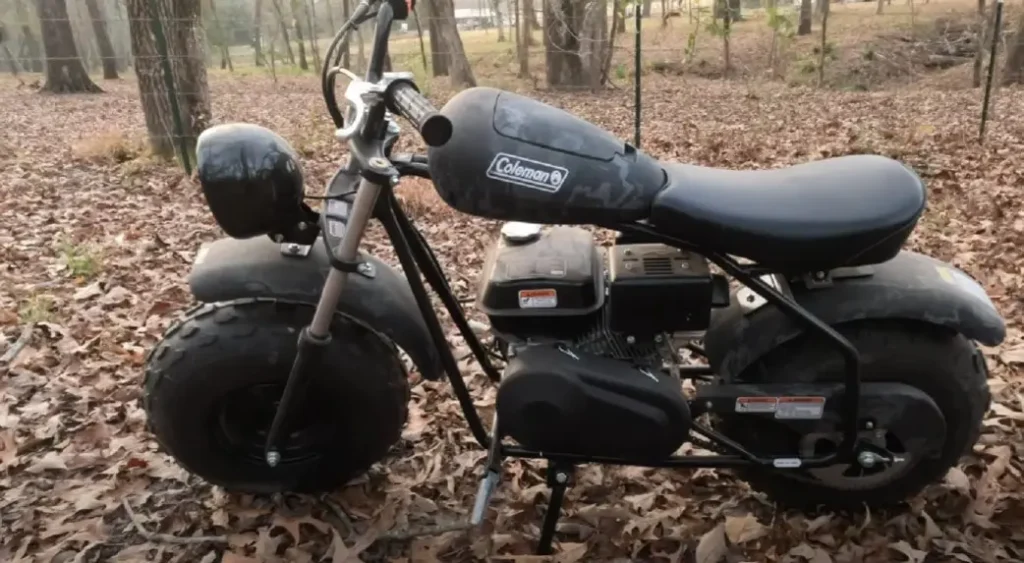
When choosing a mini bike for trails, two key factors are the engine type and transmission:
Gas vs. Electric Engines
Gas engines provide longer runtimes and more torque for challenging terrain. But electric mini bikes are quieter and better for shorter rides.
- Gas engines need refueling, oil changes and spark plugs. Electric bikes just need batteries charged.
- Gas provides the power for extended trail rides. Electric works well for shorter trips of 1-2 hours.
Two-Stroke vs. Four-Stroke
Two-stroke engines offer simpler maintenance and more power relative to their size. Four-stroke engines provide better fuel economy and low-end torque.
- Two-strokes need premixed gas and oil. Four-strokes just take plain gas.
- Four-strokes are often better for trail riding as they have smoother power delivery.
Automatic vs. Manual Transmission
Automatic transmissions are easier for new riders. Manual transmissions allow more advanced control.
- Automatics have a clutch that shifts gears automatically. With manuals, you shift gears yourself.
- Manuals provide better control for skilled riders. Automatics are simpler for beginners.
Key Mini Bike Features for Trails
When riding rugged trails, the right mini bike features make all the difference:
Suspension Travel
Look for 4-8 inches of suspension travel. More travel absorbs bumps better.
- Front suspension should be telescopic forks. Rear is usually a swingarm with shocks.
- Adjustable shocks allow tuning suspension for different conditions.
Ground Clearance
Aim for 4+ inches of ground clearance. More enables clearing rocks, logs and ruts.
- Lift kits can increase clearance if needed.
Tires and Wheels
Choose knobby, low pressure tires around 10-14 inches for traction.
- Larger tires roll over obstacles better.
- Wider rims add stability at higher speeds.
Brakes
Front and rear disk brakes provide the best stopping power.
- Hydraulic disk brakes are more responsive than cable-actuated.
- Ensure brakes are tuned right for trail conditions.
Having the right suspension, ground clearance, tires and brakes makes trail riding much more enjoyable and safer. Don’t undervalue these key components.
Recommended Modifications for Trail Riding
Based on my experience, these upgrades can significantly enhance a mini bike’s trail handling and performance:
Tires and Wheels
I strongly advise installing top-tier knobby tires designed specifically for trail conditions. These provide much better traction on loose dirt, mud, gravel and hills.
For the rims, opt for lightweight yet durable aluminum alloys. Wider rims add stability when cornering or traversing inclines.
Suspension Upgrades
High-end shocks with adjustable preload and rebound are worth the investment. Premium shocks allow you to tune the suspension precisely to match the trail and your riding style.
Skid Plates
Adding a skid plate is a simple upgrade that prevents costly damage from impacts, rocks and spills. Aluminum skid plates adequately protect the engine and frame.
Brake Improvements
Switching to hydraulic brakes vastly improves stopping power and modulation. For optimal performance, use a stainless steel braided brake line kit. This gives a firmer, more responsive feel over bumps.
The right modifications make an enormous difference in capability and safety. Don’t cut corners on critical upgrades. Your riding enjoyment depends on it.
Safety Tips and Gear for Mini Bike Trail Riding
Riding trails safely requires the right gear and precautions:
Protective Gear
- Always wear a DOT-approved helmet that fits correctly. Goggles protect your eyes from debris.
- Wear gloves for grip and hand protection. Choose off-road style boots with ankle support and deep tread.
Ride Within Your Abilities
- Know your limits and don’t push beyond your skill level. Travel at safe speeds given trail conditions.
- Take time to practice posture, balance, turning, braking and other skills before attempting difficult trails.
Carry a Trailside Repair Kit
- Bring basic tools, spare parts like tubes, and supplies like duct tape in case repairs are needed on the trail.
Avoid Hazardous Conditions
- Don’t ride on excessively rocky, wet, icy or otherwise dangerous trails. Seek alternate routes when needed.
The right gear reduces risk if a spill occurs. Riding smart and avoiding hazards is critical for staying safe. Be prepared for the unexpected on the trail.
Cost Considerations for Mini Bikes
Several key factors impact the affordability of owning and riding a mini bike:
Purchase Price
Expect to spend $500 – $1500 for the mini bike itself. You can also find good used options for less.
Registration and Insurance
Depending on your state, you may need to register the mini bike and carry liability insurance. Plan for these annual costs.
Modifications and Upgrades
Quality tires, suspension, and other upgrades can add $500 or more to get the mini bike trail ready. Factor in these setup costs.
Maintenance
Routine maintenance like oil changes, tire replacement, bearing repacks and other servicing is required. Budget approximately $200-300 annually.
Other Costs:
- Safety gear
- Fuel or charging costs
- Transporting the mini bike to trails
Carefully weigh the purchase price, operating costs, upgrades and ongoing maintenance. While mini bikes are more affordable than full-sized dirt bikes, they still require a financial commitment.
Where to Ride Mini Bikes on Trails
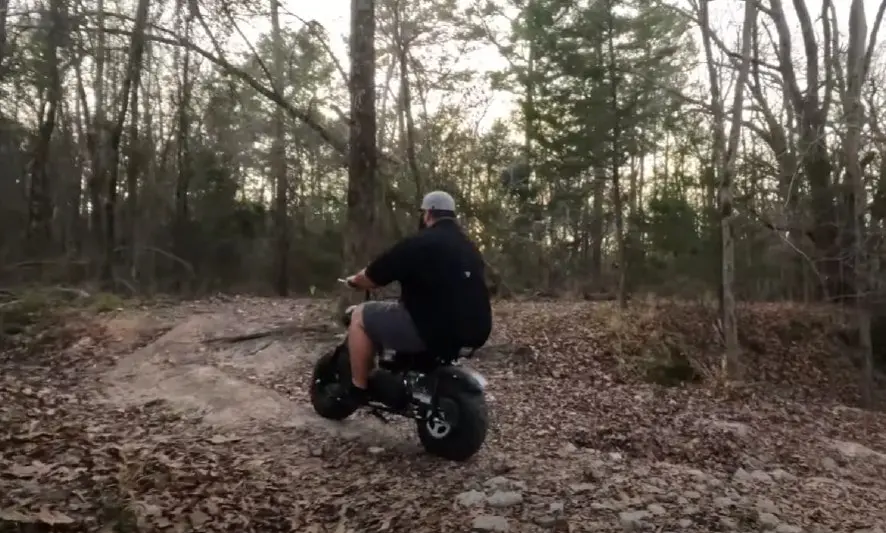
Finding suitable legal places to ride is key. Some good options are:
- OHV Parks – These off-highway vehicle parks have marked trails for mini bikes, ATVs, and dirt bikes. Trails range from beginner to expert.
- Recreation Areas – State and national forests often allow OHVs on certain roads and trails. Check regulations.
- Private Lands – Ride on private trails with the landowner’s permission. Make sure to follow their rules.
- Public Trails – Some designated multi-use trails in parks and forests permit responsible mini bike use. Take care when passing hikers and bikers.
Avoid illegally riding where mini bikes are not allowed, like hiking trails and nature preserves. This gives the sport a bad reputation.
Research regulations and seek out mini bike-friendly places. Responsible riding helps keep trails open for everyone to enjoy.
Conclusion
Mini bikes can be great for trail riding adventures. But there are important considerations when choosing one:
- Pick the right engine and transmission type based on your needs. Electric is simpler but gas has more power. Automatics are easier for beginners.
- Ensure key features like suspension, ground clearance and brakes are ideal for rugged trails.
- Make necessary upgrades to tires, suspension, skid plates and brakes. Don’t skimp on safety.
- Invest in protective gear and avoid riding beyond your abilities. Carry repair supplies in case of issues.
- Factor in costs of purchase, insurance, modifications, maintenance and more.
- Research local trail regulations and ride only in permitted areas. Take care around other trail users.
With the proper bike and preparation, mini bikes provide big fun and excitement on off-road trails. Ride responsibly, respect nature, and enjoy the adventure!


